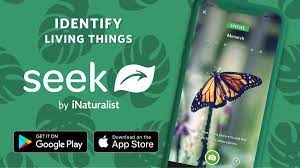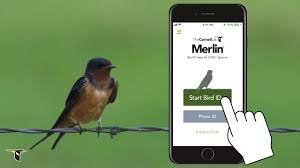Are you looking for simple ways to feel more grounded and connected to nature and the land you care for? Good news - the MOST fundamental EarthCare practice is super simple. It's called a "Sit Spot," and yes, it's exactly what it sounds like. Find a spot in nature that you can easily access every day, and sit.

But why?
Every successful EarthCare project and relationship with the land starts with the first Permaculture Principle: Observe + Interact. Before making plans to change the landscape, we first need to understand what is already present, how systems are interacting, and how we can add support while avoiding further damage.
"Deep knowledge of Nature brings with it responsibilities in its application and sharing, and takes time and dedication to attain." -Cajete, Native Science
or...
"Just observing makes nothing happen. Just acting can make problems bigger and bigger. We need to balance the two." - permaculture.org.uk
Where to find a Sit Spot
You can establish your Sit Spot anywhere that you have safe, legal access to. The possibilities are endless! To get started, it's a good idea to choose a spot that you can easily access every day. The more consistently you visit the same spot, the deeper your observations will become.
Spend a few minutes every day at your Sit Spot, through every season, and use your senses to become aware of how nature moves and acts around you. It's a meditative, grounding practice, with as much or as little purpose and direction as you wish to bring to it. Simply sitting, breathing and tuning into the natural world is good for body, mind and spirit!

If your goal is to learn how to care for your land, conserve and use resources wisely, build more habitat, and support wildlife, then spending time observing at your Sit Spot is the best place to start.
Here are a few Observation points to focus on:
- Sunlight: How does the sun move across your space? Which sections get full sun, part sun, or none? Sketch the space, label the directions, and note sunlight conditions. This will eventually help you choose where to create gardens, and make sure the right native plants are in the right places.
- Water: How does water flow through the area? Is it flooding or pooling anywhere? Do you notice rapid runoff that could be causing erosion problems? As you spend more time observing through different weather events, can you identify a good place to build a rain channel, or the ideal place to capture rainwater with a rain barrel? Sketch your observations on your map.
- Wind: How does wind move through your space? Which direction does it come from? Higher frequency of wind means more evaporation and drier conditions. Add your observations of wind conditions to the map.

- Soil: Spend some time exploring the health of your soil. Notice the texture - is it dry and crumbly? Is there enough clay content to roll it into a ball? Is it soggy and muddy? Do you notice any insects, mold or fungus? If you're planning new gardens, you may want to consider getting a soil test. The LadyBugs recommend this one from PSU Extension.
- Plant Life: What kinds of plants live here? Can you identify ground covers, grasses, flowers, trees and shrubs? Which plants are native to this ecosystem, and which have been introduced? What's currently in bloom, about to bloom, or done with its cycle? Observing the plants already living in your space will give you incredible insight into what likes to grow, what's thriving, and what may be out of balance.
- Wildlife: How are animals and insects moving through your space? Who do you see when you spend time sitting quietly? Can you observe habitat, nests, shelters, sources of food and water? This is one of the most fun parts of the practice!
The LadyBugs love using the Seek app by iNaturalist to observe species of plants, animals and fungi. It's a great hands-on way to learn more about botany and ecology. Try the challenges!
For birds, check out the Merlin app by Cornell Lab to identify birdsongs. Pure magic!
Your EarthCare Challenge:
Go outside and find a Sit Spot that you can easily access every day. Set aside 5 - 10 minutes to start! Try sitting at different times of day to gather more valuable observations about how the conditions change. Simply sit quietly, tune your senses to the natural world, observe and enjoy.
→ Want more support as you're getting started? Join our free 3 Day Sit Spot Challenge!
Get support through our EarthCare Community and start this fundamental practice right where you are - even if you don't own land. All you need is 5-15 minutes a day.
You'll get an email per day with inspiration for this practice - short, sweet + simple.
Recommended Educational Experience: Kamana Wilderness Awareness School
This innovative and transformational program is an independent study course that was recommended by our mentors, and we absolutely love it.
"The Kamana Independent Study program is an experiential four-level home study course that will guide you down a path to becoming a skilled and knowledgeable naturalist. Kamana provides all the tools you need to connect with nature at your own pace, at your own place."
Learn more and get started here.
Join EarthCare Matters
We're LadyBug EarthCare, and we support wildlife by helping humans reconnect to the land. For more DIY tips, resources + eco Inspiration, join our newsletter: EarthCare Matters.



Comments